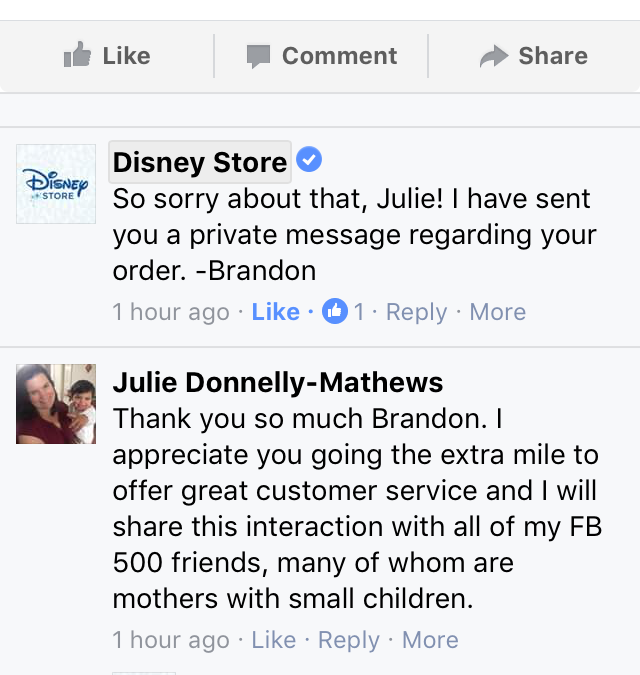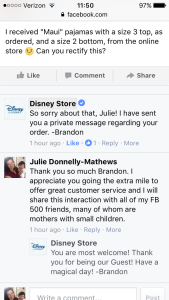by Julie Donnelly | Dec 20, 2017 | Blog
Clients often wonder how a PR agency can get reporters to read email pitches. It’s basically a combination of art, science, and alchemy definitely not for the faint of heart.
When I was the healthcare reporter for the Boston Business journal, I got an average of 300-400 emails per day. In the run up to a major conference, such as JP Morgan or HIMSS, that number could easily reach 500 emails per day. I couldn’t possibly read them all. I deleted more than half, and immediately read about a quarter of them. The rest I saved to read later. Maybe.
4 ways to lose a reporter in 70 characters
The biggest mistake you can make is failing to take advantage of the subject line to quickly convey the value of the company, product, CEO, or scientific advance. Here are a few common types of subject lines that won’t get reporters to read pitches:
- “Heads up, big news from Health Inc.” – A lot of companies waste valuable space in a subject line with phrases designed to get reporters attention. “Heads up” is really useful only if you are a TV cameraman reviewing video and the President walks into the room. Simply state the news, in the format, “Who is doing what and why.”
- “Introducing CEO Bob Smith“- A lot of companies write to offer the expertise of their thought leaders, and that’s great. But this doesn’t give me any information about Smith’s areas of expertise, or whether he’ll be a candid, interesting or thought-provoking interview. Give the reporter some insight into your expert’s point of view and, if possible, his or her personality.
- “Health Inc. tops sales projections for the third year running” – This kind of blatant promotion will immediately be deleted by most reporters. First of all, where’s the story there? Secondly, whose projections are we talking about, the company’s? Reporters need independent numbers.
- “Health Inc. to revolutionize health care“- Subject lines that are intentionally vague or seek to tease the reporter and pique their interest can backfire. This particular one is too broad and strains credulity. I would probably give it a pass. It may be necessary to keep the news under wraps until, for instance, a reporter agrees to an embargo. But try to give as much detail as possible, so he or she can make an informed decision.
2 ways to lose a reporter once they are on the hook
OK, so you’ve survived the subject line gauntlet, and the reporter has clicked on your email. The next challenge is to get him or her to read the whole pitch, or most of it, and call for an interview. Here are a few Don’ts:
- Don’t overload the reporter with background – Keep it simple. A two- to three-line pitch explaining what the news is and why it’s important is best.
- Don’t abuse embargoes -Embargoes may be necessary for a variety of reasons for instance, the news is tied to a JAMA article that has not yet been published. But putting an embargo on news to try to inflate its value may backfire. Reporters are willing to abide by embargoes as long as everyone is on the same playing field with the same rules.
If you can avoid these six pitfalls you will be well on your way to hearing the sweet sound of your phone ringing with reporter interest.
Have you ever fallen prey to one of these pitfalls? Do they ring true? What other pitching best practices have you discovered?

by Julie Donnelly | Oct 25, 2017 | Blog
There is a persistent stereotype of public relations professionals as “spin doctors.” We’re hired guns aiming to put lipstick on a pig, pull the wool over someone’s eyes, or <insert any other cliched maxim here>. The last thing we would do is tell clients to lead with empathy, telling honest stories from the heart.
In truth, PR folks want to help companies clarify, amplify and distribute their message and their mission. Often, innovators are too close their own products to effectively tell their own stories. To speak for them, PR people must first understand what drives the company from its origin story to the everyday passions of the company’s employees.
Listening is the most important skill in PR. Empathy is the most important mindset. And nowhere is this as vital as within the healthcare industry.
Hundreds of thousands of people work across the American healthcare system with a single, shared goal: to help people. It is easy to lose sight of this. Insurers, hospitals, life sciences companies, health tech startups and other healthcare vendors struggle to respond to a buffet of financial and regulatory challenges that are amplified by the current transformation to value-based care.
One Boston hospital CEO described it best when she said that the biggest struggle for most healthcare organizations is “having one foot in the boat and one foot on the dock.” Many providers have made significant strides towards goals such as shifting to pay-for-performance contracts, launching population health programs, or modernizing their payment systems to reflect consumer-driven health plans. But extending clinical and patient experience best practices to every last patient remains an elusive goal for most.
It is fair to say that our healthcare company clients all have one thing in common they are all working to help healthcare providers (or insurers or employers) to get “both feet into the boat” when it comes to value-based care. Understanding the importance of this mission, and its inherent challenges, is our first job as healthcare PR professionals.
Our second job is to help clients to lead with empathy, by guiding them back, again and again, to their core value helping customers tackle the goals of the Triple Aim. Here are three ways healthcare companies can cut to the core of what matters, tell their company story effectively, and gain customer loyalty:
Everyone is a patient
Some of the most effective and memorable client communications I have seen draw on the healthcare experiences of CEOs, other C-suite executives, researchers, other employees, or their families. We all have stories of instances when the healthcare system has not delivered on its promise, and these experiences often drive the development of new solutions among healthcare companies. Meeting “unmet medical needs” begins with sharing what these needs are and why they are important with a variety of audiences. This is often best done through personal stories.
See the caregiver
The decisions made by healthcare providers on a daily basis have life-changing consequences. Many of our clients aim to make those decisions easier, by offering evidence-based content support, by getting rid of background noise that can cloud judgment, or by simply shaving time off each clinician’s administrative burden. If healthcare companies can drill down further to describe how products may positively impact specific patient interactions, particular care transitions or certain data reporting processes, this is likely to spur more “aha” moments among reporters, potential customers and investors.
We’re all in this together
It’s easier to make the empathy connection when a healthcare vendor’s primary audience is patients or clinicians. But what about companies who are targeting CIOs, physician practice managers, front office staff, payers and employers? How, for instance, do revenue cycle management tools make patients lives better?
Connect the dots here by developing case studies, blogs and other content that drives home the value of these tools to the healthcare ecosystem, and to particular individuals. Circling back to the core mission driving the company is especially important when the success stories may not *typically* be front page news. This is key to driving continued interest among the press and potential customers, but also to fanning the passions of your workforce. Everyone within any healthcare enterprise wants to feel that they are doing good in the world. Investing in uncovering success stories will have long-term benefits both internally and externally.
The first step
To build a PR program that leads with empathy, you need to uncover the stories that help your target audience connect not only with your products, but with your company culture and your commitment to making a difference. Look for that human element and you will find your programs are far more effective.

by Julie Donnelly | Jul 19, 2017 | Blog
It takes years to build brand equity, and just an instant to tarnish it. The best brands know the brand must drive every interaction with stakeholders, including investors, the media and the public. Failing to “lead with the brand” may result in lost opportunities to create loyal ambassadors.
One crucial make-or-break moment for many brands is how they respond to customer complaints.
For retail companies, this should be Brand 101. Healthcare companies, meanwhile, are only now starting to consider patients as consumers, due in part to the greater share of the cost of care being borne by patients through higher deductibles, co-pays and coinsurance.
As patient/consumers have more “skin in the game”, demand is rising for a consumer experience that is more like what the best retail companies offer. Healthcare companies would do well to pay attention to best practices and pitfalls–across the retail industry. So here is a “Tale of Two Brands”.
Recently, my friend Eric and I had wildly different experiences with two popular consumer brands.
First, my experience: I bought a set of pajamas from disneystore.com featuring the character Maui from the Moana film. When my toddler saw the pajamas, he squealed “You’re Welcome!” (Maui’s signature phrase) with delight. But the shorts and the top were two different sizes, and the bottom was too small. Here’s what happened next:

Within an hour, Brandon had turned a customer with a complaint into a brand ambassador, offering to send another pair of pajamas, no questions asked. I did share my positive experience with friends and “Mom” networks. Also, Brandon suggested that I donate the mismatched pair of pajamas to “spread the Disney magic”, and since I have such a great feeling abut the company, I’m happy to do so. In fact, my opinion of the company is considerably higher than before I ever had this complaint.
Contrast this with my friend Eric’s experience with a popular shoe brand that was initially less than “keen” about replacing a pair of sandals that had ripped apart after a couple of months. This pair was a replacement for a first pair of sandals that broke after just a few weeks. The company has a one-year warranty in place, but they initially refused to honor it, saying it doesn’t cover replacement items. Here’s Keen’s initial response to Eric’s warranty claim:
Hello Eric,
Your warranty claim #WKUS0181563ES has been denied.
KEEN’s warranty program covers manufacturing and materials flaws for one year on original items purchased from KEEN authorized retailers. This warranty does not extend to items that were purchased from www.keenfootwear.com with promo codes awarded to satisfy previous warranty claims.
We have included a discount code for www.keenfootwear.com below as an accommodation. Promo Code: WR-HP53-MZDP-L4Discount: 20%
Brad KEEN Warranty Specialist
Brad, Thank you for your response. I’m disappointed, frankly. What I’m seeing in your policy is that your company wants the benefit of SAYING you offer a warranty, without actually standing behind your products. Would it really cost you THAT much to make this right for someone (me) that really wants to be your customer?? I believe that your company can do better. Who can I talk to that has the power to make this right for me? Regards, Eric
Eric, You are certainly welcome to contact the KEEN Fan Services supervisor or manager at 866.676.5336 to plead your case. We stand by our inspector’s verdict on this claim and cannot offer any additional accommodation for this pair. Our warranty terms and conditions state quite clearly that items obtained with warranty promo codes from previous claims are not eligible for replacement consideration. The warranty department at KEEN considers this matter closed and we apologize for any inconvenience that this causes you. Best regards, Brad KEEN Warranty Specialist
Eric then started posting on his own Facebook page about his experience, with photos of the broken shoes. Then he reached out to the Keen Facebook page. Finally, four days later, the head of customer service reached out to Eric, asking him to order a new pair of his choosing to replace the ripped sandals.
Assuming this next pair is good quality, Eric says he’ll remain a Keen customer. But his opinion of the company is damaged by the experience. It’s a tremendous missed opportunity because though Keen doesn’t know it Eric is an outdoor educator who interfaces with hundreds of kids (and their parents) each year.
He runs a Pioneer camp in Florida which couldn’t be more “on brand” for Keen, as both emphasize the joys of “unplugging” and enjoying nature. Moreover, Keen has a enlisted a number of brand ambassadors who each “represents a convergence of KEEN’s values and interests”. Eric would be a great addition to that group. But, initially, Keen’s customer service operation failed to lead with the brand, and didn’t take the time to understand its customer and his concerns. Instead, it stuck to a blanket rule, and referenced Eric as a warranty claim number, not as the brand fan he was before the incident.
So, what can healthcare companies learn from this Tale of Two Brands?
1. Speed matters
Resolving a problem quickly is a key to maintaining brand loyalty. Disney is known for their lightning quick responses to customer problems, and my experience was no exception. Brandon responded to my query within an hour, while Eric had to wait four days before getting a satisfactory response from Keen. Now, to be fair, Disney is a much, much larger company, with many more employees, so it’s understandable that Keen’s response would take longer. Unfortunately, Eric did receive an initial response quickly, but the response did not seek to understand or resolve his problem.
2. Personalize the response
Disney was able to mail me a new set of pajamas with nothing more than my Facebook name and town. They knew exactly who they were talking to, when I had bought the pajamas, what size, and my address. This kind of sophisticated contact center is rare. But smaller organizations can ask questions to get the personal information and understand the particular needs of the customer, rather than refer to a warranty claim number, which was off-putting in Eric’s case.
3. Empower employees
Disney’s approach to gaining and maintaining brand equity is to give employees the power to solve problems, not to just enforce the rules and say no. Once someone higher up the chain at Keen understood that Eric was not trying to game the warranty system, but in fact had TWO pairs of shoes fail in the space of weeks or months, the company agreed to replace the shoes. But if Brad Eric’s first contact at the company–was empowered to ask the details of the story, and then respond based on the specific situation, it could have been resolved more quickly and positively
4. Ask your critics to be your fans
Since my Disney issue was resolved so quickly, I immediately offered to share my experience. But Brandon asked me to go one step further and share the replaced pajamas which were good quality, but simply mismatched sizes. This may give the company the opportunity to earn another fan who becomes a customer in the future. It’s clear, at Disney, that the public relations and brand teams drive all interactions with the public. This creates a unified, top-to-bottom messaging experience, applied to anyone who interfaces with the company. Keen still has the opportunity to turn Eric into a brand ambassador. A great PR operation might seize this chance to engage Eric and his campers, since the camp and company missions are aligned. They could, for instance, give sandals to a small group of kids, then take photos of the campers for the Keen website or other marketing collateral.
The takeaway for healthcare
Healthcare organizations can become more like the best consumer brands by taking a proactive approach to patient complaints and concerns. By responding quickly to patient concerns, seeing patients as individuals, empowering staff to solve problems and asking newly-satisfied patients to refer their family and friends, healthcare organizations can help to create and retain brand equity. This, in turn, can help drive up patient satisfaction scores, which can have a positive impact on the bottom line, in new value-based care arrangements.

by Julie Donnelly | Apr 26, 2017 | Blog
Dear Republicans, welcome to the Health Reform PR Fire Swamp (HRPRFS)! Like the Fire Swamp from the Princess Bride, the HRPRFS features several obstacles that did tremendous damage to the Affordable Care Act. As Republicans are hurtling forward with their ACA replacement bill, now called the American Health Care Act, it’s time to reflect on the Democrats failures. Here’s how Democrats fared against the Fire Swamp’s terrors, and how Republicans might avoid the same fate:
Flame Spurts: In the Princess Bride, flame spurts erupt seemingly unexpectedly in the Fire Swamp. But on closer inspection, it is discovered that a distinctive popping sound precedes each flame spurt, making them easier to avoid.
In the HRPRFS, it’s very clear that flame spurts erupt every time a blanket claim is made by a health care reform bill’s proponents. Case in point: former President Obama’s claim that “if you like your health care plan, you can keep it.” This statement will go down as one of the worst PR blunders of the Obama Administration. The reality was that 4 million people on the individual market had to switch plans, in many cases because their old plans did not meet the minimum creditable coverage standards imposed by the ACA. But it’s too late for explaining once the flame spurts have burned you ask Princess Buttercup.
Republicans seem to have learned something from the Democrats failure to avoid these flame spurts. HHS Secretary Tom Price, speaking earlier this month, stopped short of saying everyone would be able to keep their doctors with the ACA replacement bill, instead saying “Our goal is absolutely to make certain that individuals have the opportunity to select their physician.”
Rodents of Unusual Size: The Fire Swamp in the Princess Bride featured giant, gnarly rats with sharp teeth. The ACA, meanwhile, got hit with Premium Increases of Unusual Size. When it was reported last fall that premiums on the Arizona Health Exchange would grow by an average of 116 percent for a mid-level plan, those affected were outraged, and Republicans found a new rallying cry for their claims that “Obamacare is collapsing”.
Just one insurer remains in the market, down from eight health insurers last year, after the payers priced the products too low to adequately cover the costs of a sicker risk pool than had been predicted. It was reported at the time that just a small percentage of Arizona’s population buys their insurance on the ACA marketplace and that most of those receive subsidies to absorb those large increases. But it almost doesn’t matter.
After hearing those Premium Increases of Unusual Size, everything else just sounds like a dull hum. Those big numbers stick in the imagination of the public and explaining, again, is fruitless. Earlier this month, The New York Times tried again, publishing an interactive feature explaining that only 3 percent of Americans face ACA premium increases, because everyone else either has employer-sponsored health plans, which have faced modest increases in recent years, or they receive subsidies to cover large premium increases.
Republicans faced their own Rodent of Unusual Size when the Congressional Budget Office estimated that 24 million Americans would lose their health insurance under their proposed replacement bill. They attempted to defuse the anticipated RUS by discrediting the CBO ahead of time, explaining that the non-partisan agency had previously been wrong on ACA insured estimates. But that tactic mostly failed, and Republicans are busily amending the bill to try to reduce that 24 million uninsured number, while also appeasing conservatives who want to further limit Medicaid spending.
Lightning Sand: Another of the three terrors of the Princess Bride’s Fire Swamp is lightning sand, a drier and quicker form of quicksand that swallowed up Buttercup in an instant. When it comes to health reform PR, the lightning sand tends to suck in any positive PR, making it instantly disappear in the shadow of bad news.
The dominant story of the ACA over the past several months has been high prices and few choices for consumers. This narrative has drowned out more positive stories, such as how the ACA has enabled a large number of small business owners and entrepreneurs to access health coverage. The health reform PR lightning sand has also tended to bury encouraging ACA cost data. For instance, the federal government saved $7.4 billion in avoided payments to hospitals to cover the uninsured known as the uncompensated care pool in one year alone, 2014. More than two-thirds of these costs were avoided due to Medicaid expansion, a part of the ACA which is now in Republicans crosshairs.
Republicans are getting their first taste of the lightning sand, as the CBO estimated that their ACA replacement bill would save $337 billion, but it was quickly buried by the fact that the bill would increase the ranks of the uninsured by 24 million (See: RUSes, above).
**BONUS**
Bog of Eternal Stench: The pitfalls of health reform PR cannot adequately be contained by one 1980s fantasy film. So, I’ll offer Labyrinth’s Bog of Eternal Stench as an important cautionary tale for Republicans as they move their ACA replacement bill through Congress.
When it comes to PR, a botched launch stinks for a long, long time. The healthcare.gov debacle haunted the ACA for years. It severely hobbled the credibility of the Obama Administration’s health reform efforts, as well as causing actual harm for some consumers who were unable to sign up for new health plans in time. Reporters continued to write about it as late as 2016.
Republicans will necessarily have to overhaul or completely replace the federal exchange. State exchanges will also have to change dramatically to accommodate new plan designs, pricing structures and tax credits.
If Republicans decide to eliminate the exchanges, they will need to figure out how Americans will access these new plans instead. In any event, this upcoming transition is ripe for technical and operational challenges that are likely to have real human consequences. Republicans would do well to prepare the public ahead of time for road bumps, while maintaining realistic internal timelines.
Putting the Fire Swamp in the Rearview
In the Princess Bride, Buttercup and Westley manage to best all the Fire Swamp’s challenges and live happily ever after. Robin Wright has moved on from hapless Princess to shrewd First Lady, as Claire Underwood on House of Cards, with a very promising political future.
But that’s only in Hollywood. The only escape from the health reform PR Fire Swamp, it seems, is to hand off responsibility for crafting and executing the legislation to the other party. Democratic House Leader Nancy Pelosi has been clear, it’s the GOP’s Fire Swamp now. It’s Republicans turn to listen for the popping sounds before the flame spurts, and do their best to set Americans expectations about what this new incarnation of health reform will and won’t accomplish, and within what timeframe.

by Julie Donnelly | Dec 21, 2016 | Blog
Clients have high hopes when they first engage a public relations firm. Building a brand will mean interviews with the Wall Street Journal! Blogs that go viral on Facebook and Twitter! Appearances on CNN! And well they should. After all, clients are paying good money for marketing and PR services, and they should get results.
But unfortunately, what many companies either young startups or more mature companies hitting an inflection point such as an acquisition or new product launch DON’T have is a clear message they want to convey. And that is the first building block for any brand.
In fact, we find with many clients, simply launching an intense media relations and content marketing campaign is like starting in the middle of a race when you don’t know the course. Companies will reach that finish line an effective PR strategy sooner if they begin at the starting line with a clear understanding of the race course and where they are going.
Here’s some advice for companies looking to create or hone their messaging for a precision brand-building strategy.
- Begin with a brainstorming session
A good PR firm can lead your team in exercises that will help fine-tune your messages for each product and for each audience you hope to target. This could include efforts to name a new product or to determine which concepts resonate with consumers versus potential investors and/or partners. We find that at some companies there may be a significant gap between the messages the CEO wants to convey and those advocated by the head of marketing or other important stakeholders. By engaging in a brainstorming session, those differences will be revealed and can be mediated by the PR agency to help guide the team toward the messages that will resonate best in the marketplace and show the company to its best advantage.
- Develop messaging documents
An investment of time upfront to create comprehensive messaging documents will save a tremendous amount of time down the road. Individual documents for each product are advisable. These should include a one-sentence descriptor of the product, a list of differentiators, customer pain points and gaps in the market addressed by the product. The product messaging documents should also include relevant context, including the competitive landscape. In addition, companies should develop a few versions of the overall value proposition and mission of the company, geared toward different stakeholders including investors, partners and customers. Developing these messaging documents will likely require interviews of key subject matter experts at the company to make sure they correctly reflect the most current features of the products. These documents could also include a company FAQ to either be posted on the website or used internally. CEOs should sign off on all messaging documents before they are finalized.
- Use messaging documents as “already approved content”
Once messaging documents are completed, they can form the basis for content marketing assets including blogs, bylined articles and company whitepapers. While additional input or interviews may be required, this work will be cut down significantly by having agreed-upon messages as a common backbone for all content. This will also streamline approvals for each new piece of content and preempt messaging differences among team members since all stakeholders have already agreed upon the key messages.
- Use messaging documents for media interview prep
The appropriate product messaging document, the overarching company messaging asset and the FAQ can all form the basis of media interview prep for CEOs or other company spokespeople. Your PR agency can come up a list of targeted talking points and sample questions based on the outlet, audience and angle the reporter is pursuing. But ultimately, every interview should circle back to the company’s core messages which are contained in the documents. Using the messaging documents as “lane bumpers”, as in bowling, will prevent a passionate CEO from running afoul of investors, partners or customers by veering off-message. Combining a message development program with media training, which high-quality PR firms should provide, is the best way to ensure that CEOs and other spokespeople take the best advantage of every media interview opportunity.
- Periodically update the messaging
A common challenge in developing consistent messaging for clients is when a member of the team, often the CEO, is out a step (or two, or five) ahead of the company’s current capabilities, size or product development status. Visionary CEOs are a tremendous asset for companies seeking to advance their brands, but risks abound if the CEO promises things the company can’t deliver. One way to overcome this obstacle is to commit to messaging as a dynamic process and not a static set of documents. A quarterly review to sync up messages to goals achieved is a great way to make sure that customers, partners, investors and the public are continuously reminded of the company’s forward march. Companies may also want to consider adding a “future goals” messaging document which can be added to as goals are achieved and moved into “current messaging” status.
“Start at the very beginning”
It’s a very good place to start, as Julie Andrews sang in The Sound of Music. And it’s great advice for companies who are newly engaged in building a brand. Your PR firm will start by making sure everyone is on the same page regarding the company’s key messages. Then they’ll get it in writing via messaging documents you can leverage again and again to develop a consistent, memorable brand for your company. Even if your company is well-established, your key messages may need a refresh to help take the company to the next level in its maturity.




